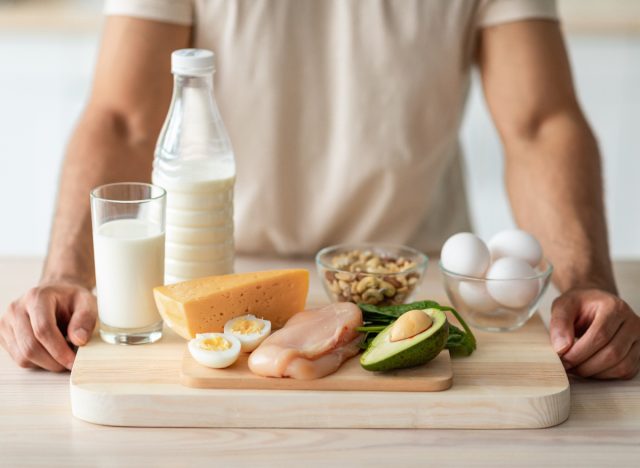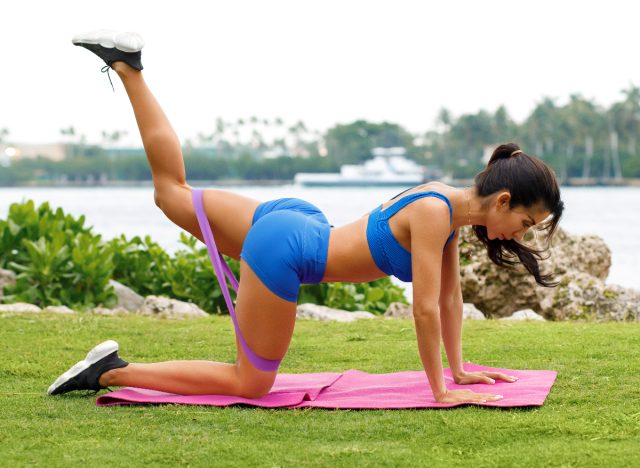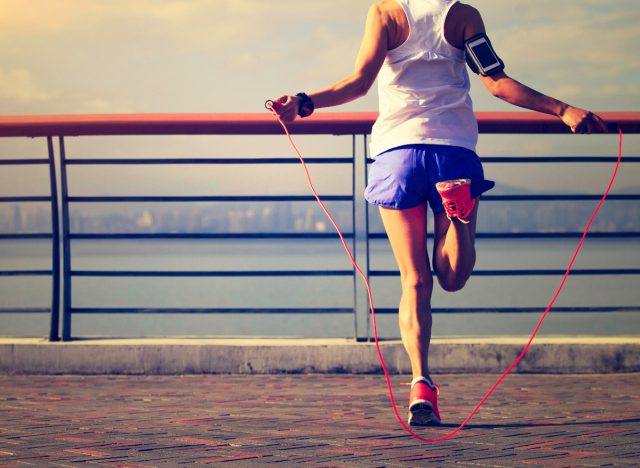Ways to Shed 20 Pounds Without a Gym Membership
Losing weight and getting in shape doesn’t require an expensive gym membership or fancy equipment. In fact, with the right game plan, you can lose 20 pounds without a gym membership—whether it’s at home or wherever you’re most comfortable working out. At the end of the day, weight loss depends on the difference between the number of calories you consume and the number of calories you burn during the day. A gym membership gives you access to exercise equipment and workouts that make it easy to burn calories, but it’s not mandatory for successful weight loss.
- Advertisement -
“You can still burn calories by exercising with just your body,” explains Domenic Angelino, CPT with International Personal Trainer Academy (IPTA). “You can still lose weight through exercise even if you [can’t] use weights. In addition, the amount of food you eat affects weight loss as well. This means that you functionally have three paths to losing weight: eat less, exercise more, or do a mix of both. Doing a mix of both is most effective.”
Angelino emphasizes that you should try to keep weight loss to an average of about 0.5 to 2 pounds per week because rapid weight loss results in muscle loss in addition to the fat you lose. “This translates into having a deficit of 250 to 1,000 calories per day,” he explains. “That means you should aim to eat about 250 to 1,000 [fewer] calories than you burn each day to lose weight at a healthy rate.”
If you want to lose 20 pounds, Angelino outlines exactly how you can accomplish it without a gym membership.
1. Eat a nutritious diet

First of all, pay attention to your diet, because it plays a crucial role in losing weight.
“Fortunately, you don’t have to make dieting super complicated, technical, or overwhelming if you don’t want to,” explains Angelino. “Just identify places in your diet where you can replace foods you normally eat with lower-calorie versions of those foods. For example, if you like to make sandwiches, find a way to replace your bread with lower-calorie bread. Do the same thing for the contents of the sandwich.Taking small steps like this really add up, and it all helps you lose weight easier to replace low-calorie foods.
2. Establish effective habits


Build productive habits that will stick and help you move toward your goals. According to Angelino, one is important for individuals who do not have a gym membership where they work out. So find a place to dedicate your workouts – and use it just for that.
“It can be a space in your home, a nearby park, or wherever you want. This can make it much easier to stick with your workouts long-term,” Angelino says. “People often make the mistake of planning to exercise at home in an area they use for recreational activities for rest. This often does not become an effective habit because many people who use this approach have difficulty motivating themselves to actually use that space for exercise, because they already associate it with rest.”
3. Exercise three to five days a week


Aim to exercise three to five days a week. This goes without saying, but the more you exercise, the more calories you burn – and burning more calories means faster weight loss. That said, don’t overdo it. Allowing plenty of time to rest and recover between sessions is essential for muscle repair and progress.
“Making sure you get enough rest also prepares you to give it your all in your next workout, allowing you to get the most out of it,” Angelino points out. “That’s why the sweet spot for most people will be to aim for exercise three to five days per week. If you’re new to exercise, start by aiming for three days per week. Then gradually build up to five days per week. week over time.”
4. Invest in affordable home exercise equipment


Exercising with your body weight can be incredibly effective, but you may want to buy some affordable home exercise equipment to change things up.
“Everything counts, but you’ll find you make a lot more progress if you use some kind of equipment,” says Angelino. “This allows you to match the resistance you’re using to your current level of strength, making the workout more effective. It can be a big initial cost but can pay off in the long run. Look into buying adjustable dumbbells to train your muscles. [Consider] buy cardio equipment like a stationary bike or treadmill to help you get cardio even when the weather doesn’t allow you to exercise outside.”
5. Include progression in your training sessions


Progression is key if you want to lose weight. As you become fitter, your ability to perform work will increase. This means that you will be able to increase the intensity and duration of your workouts as time goes on.
“The more intense your workouts are and the longer they last, the more calories they help you build,” explains Angelino. “So, try to incorporate strategic progression into your training to take advantage of this benefit. Make small changes whenever possible, and it will all add up over time.”
Alexa Mellardo
Alexa is the Mind + Body Deputy Editor of Eat This, Not That!, overseeing the M+B channel and delivering compelling fitness, wellness and self-care topics to readers. Read more about Alexa

